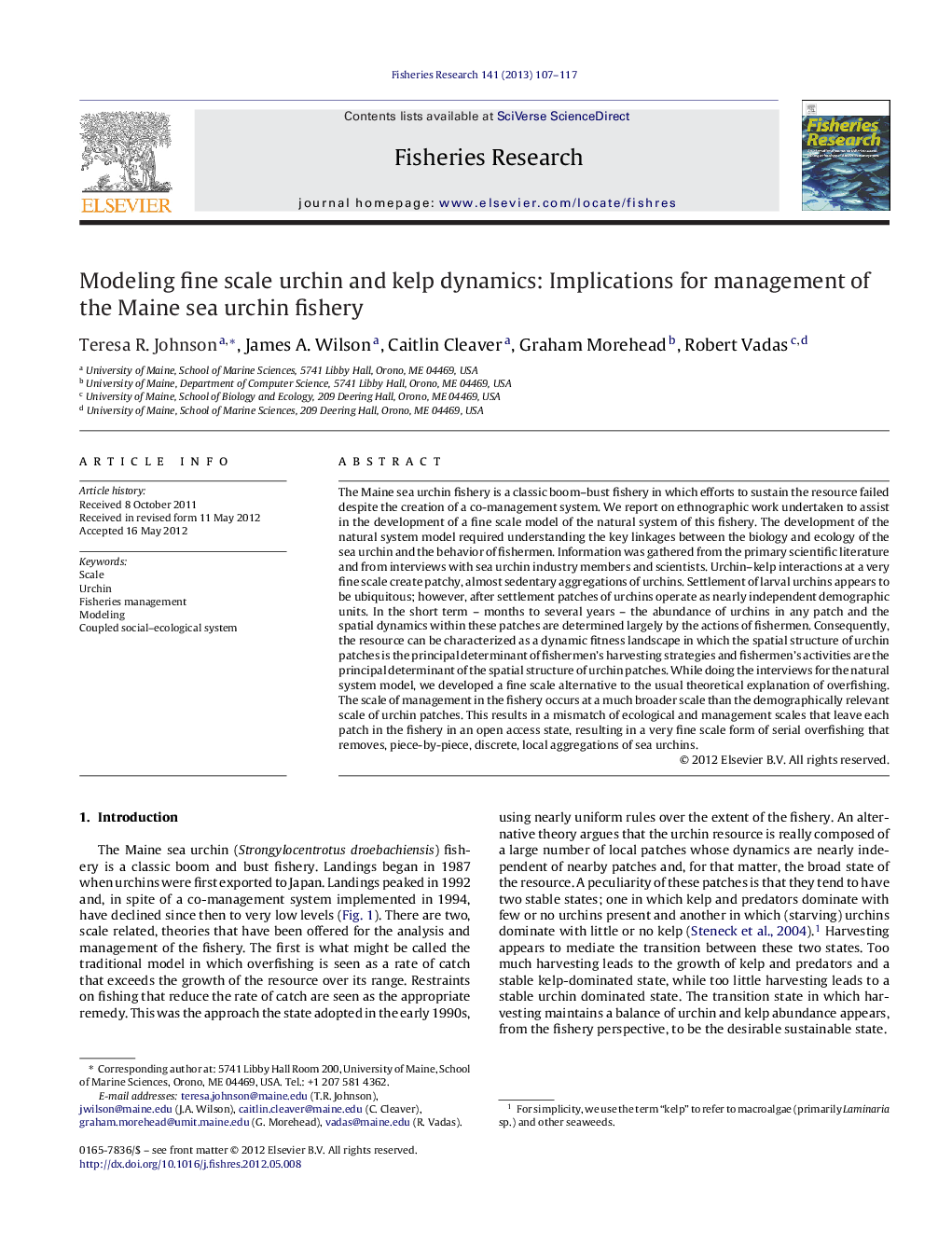| Article ID | Journal | Published Year | Pages | File Type |
|---|---|---|---|---|
| 4543187 | Fisheries Research | 2013 | 11 Pages |
The Maine sea urchin fishery is a classic boom–bust fishery in which efforts to sustain the resource failed despite the creation of a co-management system. We report on ethnographic work undertaken to assist in the development of a fine scale model of the natural system of this fishery. The development of the natural system model required understanding the key linkages between the biology and ecology of the sea urchin and the behavior of fishermen. Information was gathered from the primary scientific literature and from interviews with sea urchin industry members and scientists. Urchin–kelp interactions at a very fine scale create patchy, almost sedentary aggregations of urchins. Settlement of larval urchins appears to be ubiquitous; however, after settlement patches of urchins operate as nearly independent demographic units. In the short term – months to several years – the abundance of urchins in any patch and the spatial dynamics within these patches are determined largely by the actions of fishermen. Consequently, the resource can be characterized as a dynamic fitness landscape in which the spatial structure of urchin patches is the principal determinant of fishermen's harvesting strategies and fishermen's activities are the principal determinant of the spatial structure of urchin patches. While doing the interviews for the natural system model, we developed a fine scale alternative to the usual theoretical explanation of overfishing. The scale of management in the fishery occurs at a much broader scale than the demographically relevant scale of urchin patches. This results in a mismatch of ecological and management scales that leave each patch in the fishery in an open access state, resulting in a very fine scale form of serial overfishing that removes, piece-by-piece, discrete, local aggregations of sea urchins.
► We review the coupled socio-ecological conditions influencing sustainability in the Maine sea urchin fishery. ► We describe the ethnographic approach we used to gather data to model urchin–kelp interactions. ► We describe elements of the natural system that influence fishermen's harvesting strategies.
